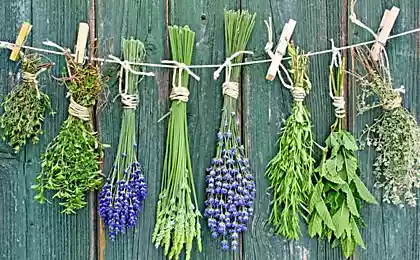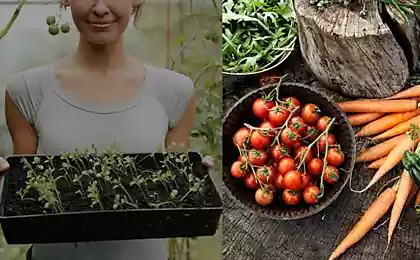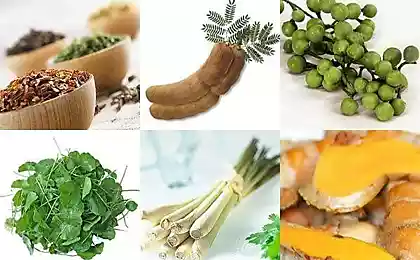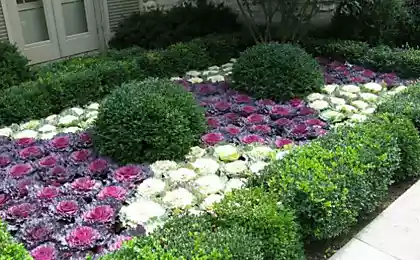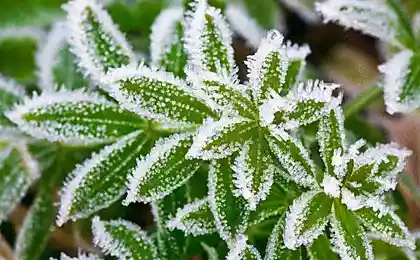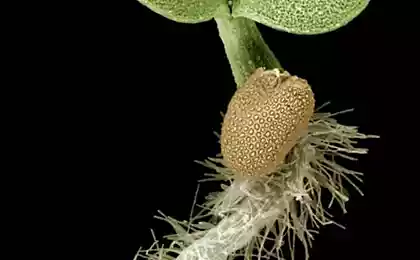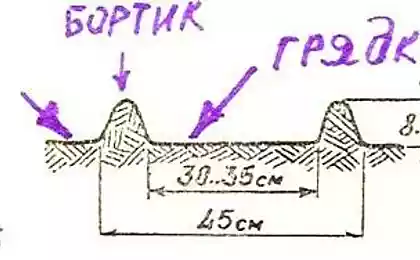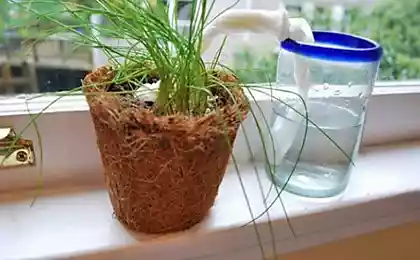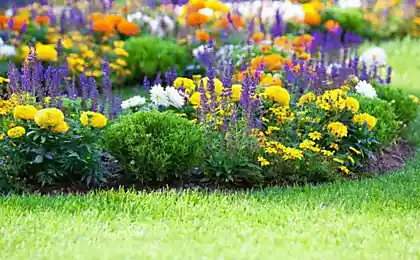610
Organic fertilizers from plants
Any of the most rich soil, over time are depleted. All plants, cultivated and weedy, for their livelihoods are constantly choose from the earth the necessary nutrients. So the soil is necessary to support organic and mineral substances.

It is only at first glance it seems that the only one who can help restore the soil — the people. Nature long ago, and wisely arranged everything so that going from the ground into the plant elements together with the same plants back in the ground, exercising a great incessant circulation of substances. And we, following this law, can very successfully maintain the fertility of our soil, and with it to obtain maximum possible yields.
Plants = Yes fertilizer, plants are able to be a great fertilizer. Moreover, they can be used in three forms:
Roman scholar and writer Pliny the Elder in the 50-70 years of our era voiced this thought: "All agree that nothing is more useful than Lupin, if formation of beans to fix in the soil with a plow or bunches of lupine, cut at the soil surface, to bury it near the roots of fruit trees and vines ... This is as good a fertilizer as manure". That is, about the remarkable ability of plants to fertilize the soil has long been known — we can only enrich this knowledge with modern experience.
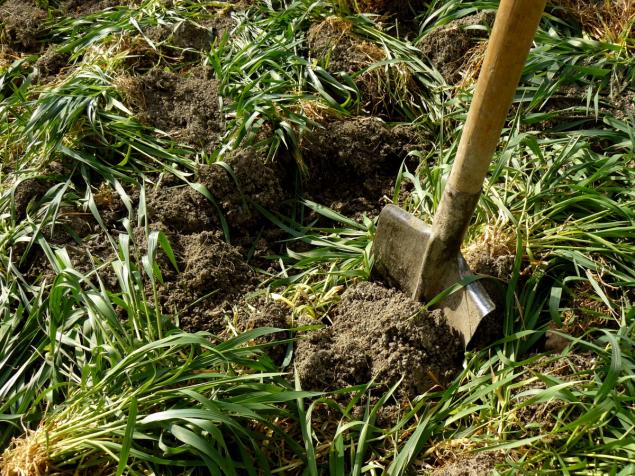
All plants that enhance soil fertility and are grown specifically for this, are referred to collectively as green manure. Green manure crops suppress the growth of weeds, clean the soil of diseases and pests, are used as mulch and as a raw material for preparation of compost and liquid fertilizer. Surprisingly, organic matter, formed from the connection of sunlight, air and water equivalent to manure, and sometimes it much more efficiently!
As green manure is most often used:
Legumes
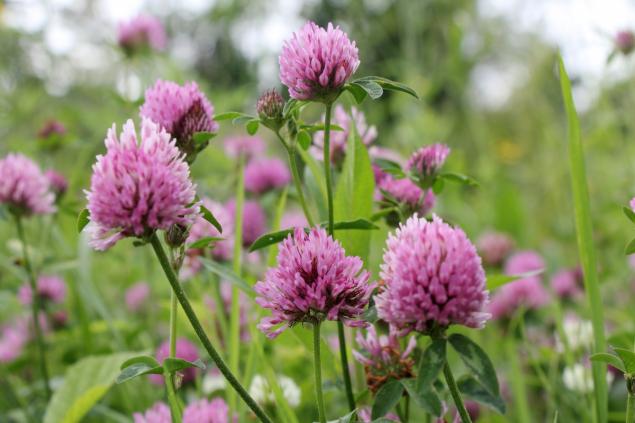
Legumes enrich the soil with organic matter, nitrogen, phosphorus, potassium
Cruciferous

These plants enrich the soil with organic matter, phosphorus and sulfur. Besides, mustard clears the soil of wireworms, and radish oil actively suppresses the development of nematodes.
Crops
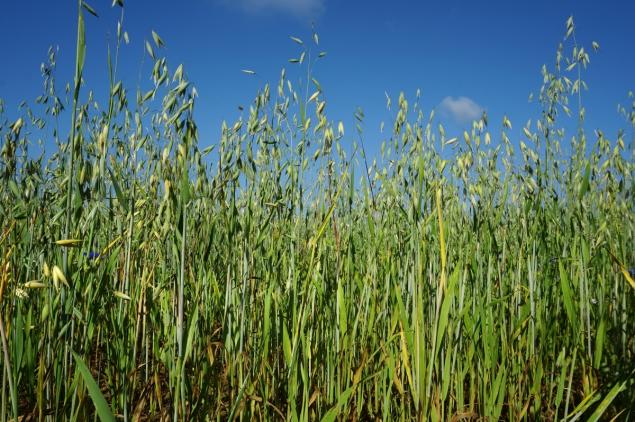
Crops enrich the soil with organic matter, nitrogen and potassium. Buckwheat increases the soil's phosphorus and potassium and is recommended for heavy soils, especially in between rows of fruit crops.
Almost all plants-green manure can be used as feed for livestock.
Compost is One of the most "successful" fertilizer — compost. What it is, you know almost everyone, who has a summer residence. This is a very effective organic fertilizer, which is produced by the decomposition (perepravnaya) various organic substances.
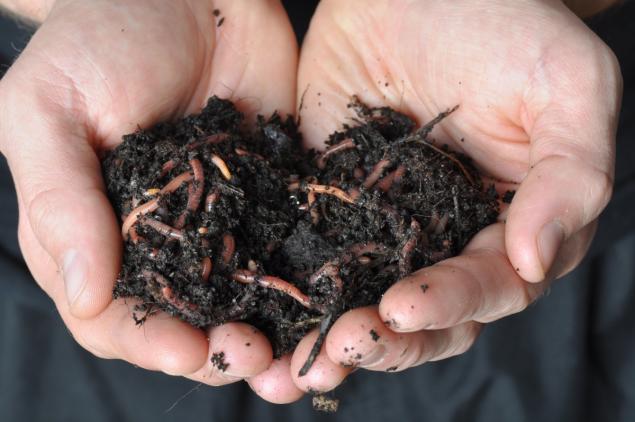
To make compost you can grow some plants such as sunflower, alfalfa, comfrey. And you can just take the remains of the country cultivated plants, stubble green manure and just any grass or fallen leaves.
It is not recommended to put in garden compost
Liquid green fertilizer There is a way of getting an effective organic fertilizer is much more rapid than the long-term composting of plant residues. This — infusions, liquid fertilizer.
What good are green manure:
In the barrel about 3/4 full (you can "chock-full") laid the green weight of the cut grass, leaves, weed directly from the roots of weeds, stepchildren, (herbs can even with seeds), and all filled with water to the brim.
It remains to cover the barrel top. Can — plastic wrap (then make a few holes for gas exchange), and you can just any makeshift cover. Film it is desirable to fix with tape or rope.
The resulting mixture is left for maceration and fermentation. A week and a half, and the green manure is ready for use. The color — a muddy green-yellow, smell — suitable fermented grass.
The following video will in detail acquaint us with the practical technology of manufacturing a liquid green fertilizer. Constantine, a dacha, shows and tells how it is done:
The resulting infusion for supplements used in a ratio of 1:10, i.e. in a bucket of water — 1 liter of infusion. Do not make feeding "thicker" — only to damage the plant and burn the roots as an infusion it is quite concentrated. If you really want to do dressing "stronger", do an experiment first on a single plant, and then risk all the beds.
After all the infusion of the remaining grass can once again fill with water and in a day or two to use for irrigation without dilution.
About your recipe for a complex liquid green fertilizer in the following video says Olga Platonova.
Tips from truckers
So we finished a short excursion into the world of green fertilizers. And made sure it is simple, natural and naturally and very good for the soil in our suburban areas (unless, of course, do everything in moderation — that is, to always remember: lack of knowledge cannot be replaced by excess fertilizer!) published
P. S. And remember, only by changing their consumption — together we change the world! ©
Source: www.7dach.ru

It is only at first glance it seems that the only one who can help restore the soil — the people. Nature long ago, and wisely arranged everything so that going from the ground into the plant elements together with the same plants back in the ground, exercising a great incessant circulation of substances. And we, following this law, can very successfully maintain the fertility of our soil, and with it to obtain maximum possible yields.
Plants = Yes fertilizer, plants are able to be a great fertilizer. Moreover, they can be used in three forms:
- Natural (live) — when the green mass of plants buried in the ground
- Humus (compost)
- Liquid — tincture of green mass of plants
Roman scholar and writer Pliny the Elder in the 50-70 years of our era voiced this thought: "All agree that nothing is more useful than Lupin, if formation of beans to fix in the soil with a plow or bunches of lupine, cut at the soil surface, to bury it near the roots of fruit trees and vines ... This is as good a fertilizer as manure". That is, about the remarkable ability of plants to fertilize the soil has long been known — we can only enrich this knowledge with modern experience.

All plants that enhance soil fertility and are grown specifically for this, are referred to collectively as green manure. Green manure crops suppress the growth of weeds, clean the soil of diseases and pests, are used as mulch and as a raw material for preparation of compost and liquid fertilizer. Surprisingly, organic matter, formed from the connection of sunlight, air and water equivalent to manure, and sometimes it much more efficiently!
As green manure is most often used:
Legumes
- Broad beans
- Vetch, winter or hairy
- Field peas, or pelusso
- Clover
- Lupin
- Alfalfa
- Siradella

Legumes enrich the soil with organic matter, nitrogen, phosphorus, potassium
Cruciferous
- Mustard
- Rape
- Radish oilseed
- Cress

These plants enrich the soil with organic matter, phosphorus and sulfur. Besides, mustard clears the soil of wireworms, and radish oil actively suppresses the development of nematodes.
Crops

Crops enrich the soil with organic matter, nitrogen and potassium. Buckwheat increases the soil's phosphorus and potassium and is recommended for heavy soils, especially in between rows of fruit crops.
Almost all plants-green manure can be used as feed for livestock.
Compost is One of the most "successful" fertilizer — compost. What it is, you know almost everyone, who has a summer residence. This is a very effective organic fertilizer, which is produced by the decomposition (perepravnaya) various organic substances.

To make compost you can grow some plants such as sunflower, alfalfa, comfrey. And you can just take the remains of the country cultivated plants, stubble green manure and just any grass or fallen leaves.
It is not recommended to put in garden compost
- Flowering plants and plants with seeds
- Perennial rhizomatous weeds
- Garden waste infected with pests and diseases
- Insect pests, their larvae and eggs
- Garden waste after use herbicides (if the manufacturer of the herbicides does not indicate otherwise)
- The feces of Pets and people!
Liquid green fertilizer There is a way of getting an effective organic fertilizer is much more rapid than the long-term composting of plant residues. This — infusions, liquid fertilizer.
What good are green manure:
- First, they are absorbed by the plant directly.
- Secondly, due to the alkaline solution decreases the acidity of the soil.
- Third, the soil gets a lot of microorganisms, secretions of which have a protective action.
In the barrel about 3/4 full (you can "chock-full") laid the green weight of the cut grass, leaves, weed directly from the roots of weeds, stepchildren, (herbs can even with seeds), and all filled with water to the brim.
It remains to cover the barrel top. Can — plastic wrap (then make a few holes for gas exchange), and you can just any makeshift cover. Film it is desirable to fix with tape or rope.
The resulting mixture is left for maceration and fermentation. A week and a half, and the green manure is ready for use. The color — a muddy green-yellow, smell — suitable fermented grass.
The following video will in detail acquaint us with the practical technology of manufacturing a liquid green fertilizer. Constantine, a dacha, shows and tells how it is done:
The resulting infusion for supplements used in a ratio of 1:10, i.e. in a bucket of water — 1 liter of infusion. Do not make feeding "thicker" — only to damage the plant and burn the roots as an infusion it is quite concentrated. If you really want to do dressing "stronger", do an experiment first on a single plant, and then risk all the beds.
After all the infusion of the remaining grass can once again fill with water and in a day or two to use for irrigation without dilution.
About your recipe for a complex liquid green fertilizer in the following video says Olga Platonova.
Tips from truckers
- Excellent foliar application will serve as an infusion of nettles, alfalfa or comfrey with tansy, shepherd's purse and chamomile. Well to add to ash and bone meal.
- Liquid fertilizer from nettles, sow bugs, clover, chickweed, bluegrass and fescue are perfect for feeding any vegetables
- Liquid fertilizer from the leaves of the dandelion is not suitable for cabbage and beets
- For liquid fertilizers is not recommended to use sorrel, wheat grass, quinoa and Buttercup, because, along with useful, they contain harmful substances, suppressing the growth of vegetable crops
- I do not adviset for liquid fertilizer use cereals — they do not decompose
- Essential fertilizer for plants-acidophilus — hydrangeas, azaleas, rhododendron and Camellia is "cottonseed flour", which is made from the pomace after pressing oil from cotton seed
- Fall liquid fertilizer is helpful to shed all future patch
- Some gardeners suggest to add in raw materials for fermentation a little urea
- Soil, watered with infusion of nettle, attracts earthworms
So we finished a short excursion into the world of green fertilizers. And made sure it is simple, natural and naturally and very good for the soil in our suburban areas (unless, of course, do everything in moderation — that is, to always remember: lack of knowledge cannot be replaced by excess fertilizer!) published
P. S. And remember, only by changing their consumption — together we change the world! ©
Source: www.7dach.ru





